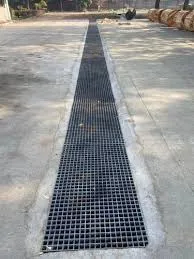
-
 Afrikaans
Afrikaans -
 Albanian
Albanian -
 Amharic
Amharic -
 Arabic
Arabic -
 Armenian
Armenian -
 Azerbaijani
Azerbaijani -
 Basque
Basque -
 Belarusian
Belarusian -
 Bengali
Bengali -
 Bosnian
Bosnian -
 Bulgarian
Bulgarian -
 Catalan
Catalan -
 Cebuano
Cebuano -
 China
China -
 China (Taiwan)
China (Taiwan) -
 Corsican
Corsican -
 Croatian
Croatian -
 Czech
Czech -
 Danish
Danish -
 Dutch
Dutch -
 English
English -
 Esperanto
Esperanto -
 Estonian
Estonian -
 Finnish
Finnish -
 French
French -
 Frisian
Frisian -
 Galician
Galician -
 Georgian
Georgian -
 German
German -
 Greek
Greek -
 Gujarati
Gujarati -
 Haitian Creole
Haitian Creole -
 hausa
hausa -
 hawaiian
hawaiian -
 Hebrew
Hebrew -
 Hindi
Hindi -
 Miao
Miao -
 Hungarian
Hungarian -
 Icelandic
Icelandic -
 igbo
igbo -
 Indonesian
Indonesian -
 irish
irish -
 Italian
Italian -
 Japanese
Japanese -
 Javanese
Javanese -
 Kannada
Kannada -
 kazakh
kazakh -
 Khmer
Khmer -
 Rwandese
Rwandese -
 Korean
Korean -
 Kurdish
Kurdish -
 Kyrgyz
Kyrgyz -
 Lao
Lao -
 Latin
Latin -
 Latvian
Latvian -
 Lithuanian
Lithuanian -
 Luxembourgish
Luxembourgish -
 Macedonian
Macedonian -
 Malgashi
Malgashi -
 Malay
Malay -
 Malayalam
Malayalam -
 Maltese
Maltese -
 Maori
Maori -
 Marathi
Marathi -
 Mongolian
Mongolian -
 Myanmar
Myanmar -
 Nepali
Nepali -
 Norwegian
Norwegian -
 Norwegian
Norwegian -
 Occitan
Occitan -
 Pashto
Pashto -
 Persian
Persian -
 Polish
Polish -
 Portuguese
Portuguese -
 Punjabi
Punjabi -
 Romanian
Romanian -
 Russian
Russian -
 Samoan
Samoan -
 Scottish Gaelic
Scottish Gaelic -
 Serbian
Serbian -
 Sesotho
Sesotho -
 Shona
Shona -
 Sindhi
Sindhi -
 Sinhala
Sinhala -
 Slovak
Slovak -
 Slovenian
Slovenian -
 Somali
Somali -
 Spanish
Spanish -
 Sundanese
Sundanese -
 Swahili
Swahili -
 Swedish
Swedish -
 Tagalog
Tagalog -
 Tajik
Tajik -
 Tamil
Tamil -
 Tatar
Tatar -
 Telugu
Telugu -
 Thai
Thai -
 Turkish
Turkish -
 Turkmen
Turkmen -
 Ukrainian
Ukrainian -
 Urdu
Urdu -
 Uighur
Uighur -
 Uzbek
Uzbek -
 Vietnamese
Vietnamese -
 Welsh
Welsh -
 Bantu
Bantu -
 Yiddish
Yiddish -
 Yoruba
Yoruba -
 Zulu
Zulu
exploring efficient methods for streamlining frp laundering
Exploring Efficient Methods for Streamlining FRP Laundering
In recent years, the demand for well-maintained Fiber Reinforced Polymer (FRP) equipment has surged, particularly in industries such as construction, automotive, and aerospace. As the use of FRP materials grows, so does the need for efficient laundering processes that ensure these components are kept clean and operationally optimal. Streamlining FRP laundering not only enhances performance but also extends the lifespan of these materials, ultimately contributing to sustainability and cost-effectiveness in various applications.
One of the foremost challenges in FRP laundering is the complexity of its compositions. FRP materials are often composed of various resins and fibers, making them susceptible to different types of contamination. To address this, industries must adopt a systematic approach toward cleaning that tailors methods to the specific materials involved. For instance, using environmentally friendly solvents can minimize damage while effectively removing contaminants. This approach aligns with contemporary sustainability goals, which prioritize the use of green chemicals over harsh alternatives.
Another effective strategy involves the implementation of automated cleaning systems. Automation can significantly reduce the time and labor costs associated with manual laundering. Robotic systems equipped with specialized brushes and rinsing mechanisms can ensure a thorough clean while minimizing human error. Such technology presents an opportunity to standardize cleaning processes, ultimately leading to uniformity in maintenance across various locations and applications.
exploring efficient methods for streamlining frp laundering

Training and education also play a pivotal role in streamlining FRP laundering. Personnel must be well-versed in the unique properties of FRP materials and the best practices for cleaning them. By investing in training programs, organizations can empower their workforce to carry out effective laundering procedures, resulting in reduced risk of damage and improved operational efficiency.
Additionally, the integration of data analytics into laundering processes can aid in monitoring the condition of FRP components. By collecting data on cleaning frequency and performance, industries can identify patterns and optimize their laundering schedules. Predictive maintenance models can be developed, indicating when a piece of FRP equipment requires cleaning, thus preventing potential failures beforehand.
In summary, streamlining FRP laundering is essential for maximizing the performance and longevity of these advanced materials. By adopting environmentally friendly methods, leveraging automation, enhancing training, and utilizing data analytics, industries can significantly improve their laundering operations. As we advance in technology and environmental awareness, the emphasis on efficient FRP laundering will continue to grow, fostering a more sustainable future across multiple sectors. By prioritizing these initiatives, organizations can not only enhance their operational efficiency but also contribute positively to the environment and the longevity of their materials.









